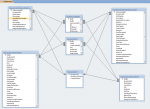connerlowen
Registered User.
- Local time
- Today, 13:39
- Joined
- May 18, 2015
- Messages
- 204
HI,
I have a database that will take lots of data entered by an employee and calculate some additional data and generate quotations. Within each quote there is a possibility for 15 different metals (5 Precious Metals, and 10 Base Metals). There is also 5 fields that need to be filled out about each Metal (What the metal is, the market being used, weight, whether it is included in a different price, and the price). I currently have 75 fields to address each Metal and their 5 fields respectively. Is there a better way to Normalize this data, and accomplish what I need accomplished? I want at the form level the employee to tell the database whether they want to add a Precious Metal, or Base Metal, or Move on to other data entry.
Here is a Screenshot of the design view of one of my tables with too many fields:

Thanks,
Conner
I have a database that will take lots of data entered by an employee and calculate some additional data and generate quotations. Within each quote there is a possibility for 15 different metals (5 Precious Metals, and 10 Base Metals). There is also 5 fields that need to be filled out about each Metal (What the metal is, the market being used, weight, whether it is included in a different price, and the price). I currently have 75 fields to address each Metal and their 5 fields respectively. Is there a better way to Normalize this data, and accomplish what I need accomplished? I want at the form level the employee to tell the database whether they want to add a Precious Metal, or Base Metal, or Move on to other data entry.
Here is a Screenshot of the design view of one of my tables with too many fields:

Thanks,
Conner
Last edited:

